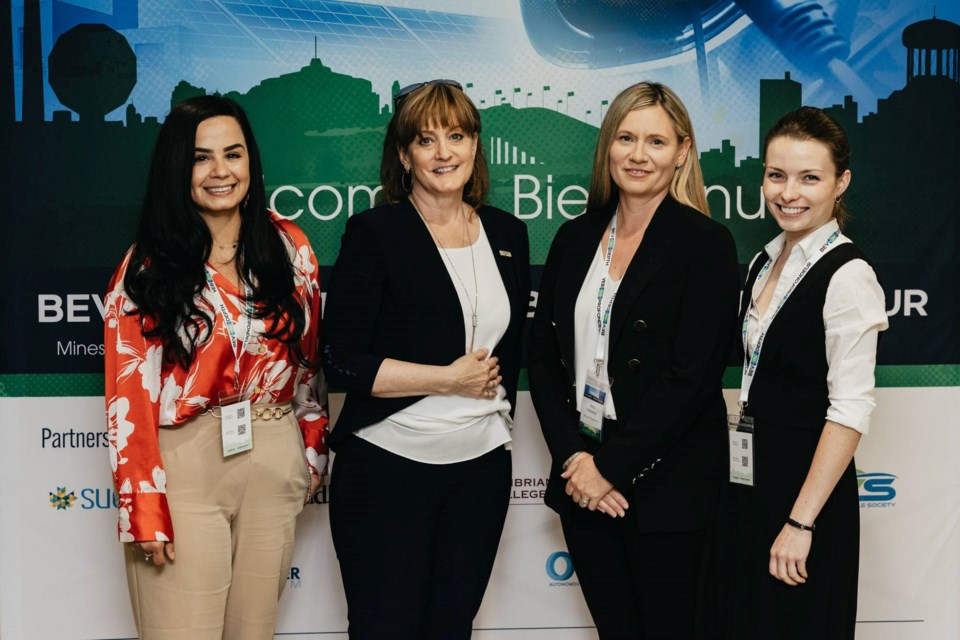For years now, the mining industry has been calling for change in the way it recruits its workforce, with an emphasis on bringing more women into the fold.
But any changes that have taken place are marginal at best, according to Nour Hachem-Fawaz, president and founder of Build a Dream, an organization that helps connect young girls and women to the skilled trades, STEM (science, technology, engineering, math) careers, and entrepreneurship.
Of the 7,000 general machinists working across Ontario, just 130 are women, she said, and among heavy duty equipment mechanics, fewer than 20 are women.
Companies are investing money into attracting women, but without corresponding industry-wide changes, retention is poor, Hachem-Fawaz said.
“If we're looking at the pipeline, the pipeline's not even there; we don't even have apprentices in the pipeline to get women into all the companies," she said.
“So that's what I mean by retention when I say that our practices have to shift, and it has to be a dramatic change.”
Hachem-Fawaz was speaking as a panellist during the closing hours of the BEV In Depth: Mines to Mobility conference held in Sudbury last week.
The topic of conversation was how the industry can develop the talent and skills needed to meet the demand being generated by the battery-electric vehicle industry.
According to the Mining Industry Human Resources Council, Canada will need to hire roughly 80,000 workers between 2020 and 2030 to meet that demand, and women will play an important role in filling that gap.
Though some advancements have been made on this front, there was a backslide during the pandemic, Hachem-Fawaz said.
As businesses closed and people were sent home, much of the responsibility for childcare fell to women, including home schooling and adapting to online learning, she said.
Some women in office jobs had the option of returning to their work in the evenings, but technical work, such as that in trades, didn’t allow for that, Hachem-Fawaz said.
“So a lot of work that was put into recruiting women into this space was lost during COVID.”
Mining engineer Samantha Espley recalled that, when she was hired at Falconbridge (now Glencore) early in her career, few women worked alongside her, a fact that made her angry until she realized the industry had been bound for decades by the provincial Mining Act, which actually prohibited women from working underground.
That didn’t change until 1978, she noted. And so, in the aftermath, Falconbridge and other mining companies had to scramble to catch up in bringing more women into the industry.
“You’re not going to have an influx of women as soon as that law was changed, right?” said Espley, who’s currently a senior executive advisor for Stantec. “Because there’s nobody thinking about it, or in the pipeline to be hired.”
Since then, Espley said, she’s seen encouraging changes in the industry, including companies that have introduced drys (changerooms) for women, along with an intentional openness to more diverse and equitable hiring practices.
And that goes beyond gender.
“We’re starting to think about diversity as more than just gender, and I think that continues to evolve,” she said. “We need to continue to evolve to get the talent to fill the pipeline that we have.”
Want to read more stories about business in the North? Subscribe to our newsletter.
Stella Holloway said she thrived in the industry thanks to mentors and other women who came before her who served as role models.
But she also believes that positive change stems from the culture set by the company.
“It’s not just talking the talk, but walking the walk,” said Holloway, MacLean Engineering’s vice-president of sales and operations.
“And when your organization truly believes in diversity and inclusion… you feel it and you see it. You see actions and consequences there.”
That might include redefining roles that take into account peoples' different skills and abilities, including physical constraints, to "make the roles work for everyone," she said.
Hachem-Fawaz said that, over time, the companies that will succeed will do so by introducing family-friendly policies and protocols that mirror contemporary society.
Young families these days have two parents working, many of whom eschew 70-hour work weeks in favour of a better work-life balance, she said.
When it comes to raising families, men today are just as likely as women to take parental leave, and that should be normalized and accepted, Hachem-Fawaz added.
This shift in approach shouldn’t fall to just women, but should be shared by leaders across the industry, all working together toward change, she argued.
“It’s not a financial, immediate benefit, and I get it,” Hachem-Fawaz said. “But it’s a long-term advantage that will allow you to really, dramatically change the way you do business, and historically, research show’s it’s positive.”




